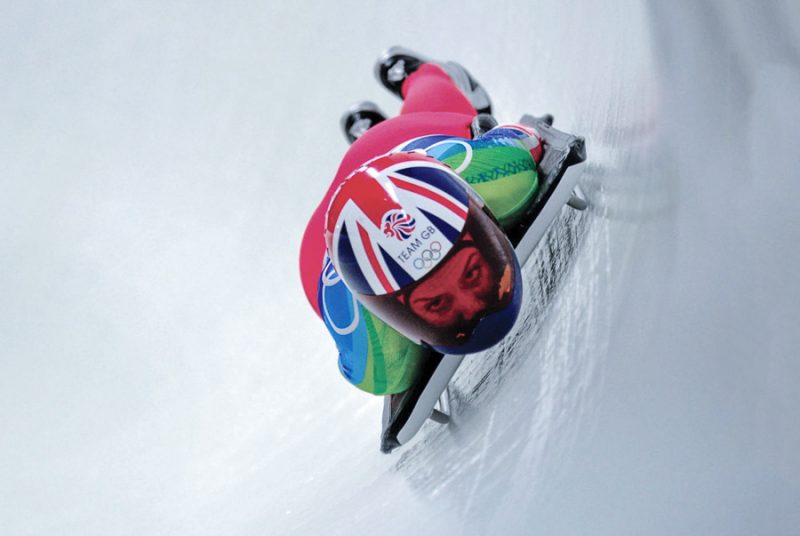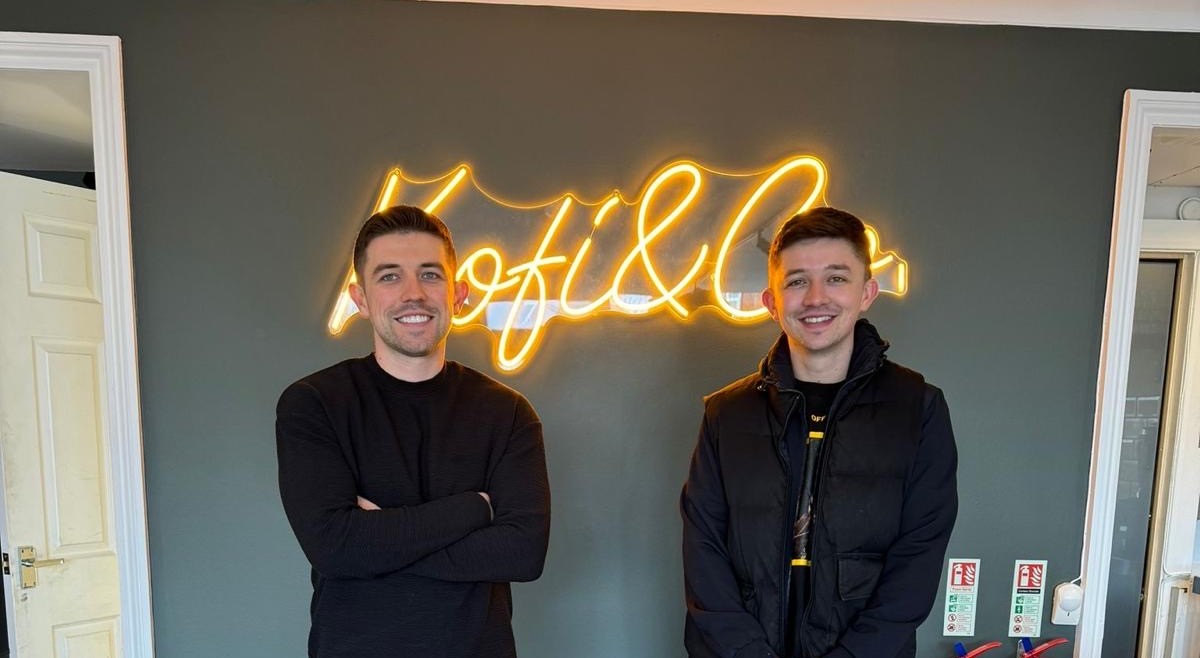On the 10th May, Leeds International Festival is hosting Sport 2.0; a discussion between some of the UK’s most decorated athletes and coaches on how technology is making the difference between winning and losing, and what new developments we can expect to see over the coming years.
As the first British individual gold medallist at a Winter Olympics for 30 years, and the only British medallist at the Winter Olympics in Vancouver 2010, Amy Williams MBE is certainly a sporting superstar. Since retiring from professional sport, Amy has continued to inspire, acting as an Olympic ambassador, working on the Gadget show, and commentating at a number of events.

Leeds Living spoke to Amy Williams about her sporting experiences, and how technology helped her to achieve success.
Have you ever been to Leeds International Festival?
‘No’ Amy said. ‘In fact, I had never even heard of it before being asked to speak!’ Despite this, Amy told us that she is excited to attend the Leeds International Festival this year. After seeing the lineup for the event, with the diverse array of decorated athletes and coaches, Amy is looking forward to ‘the chance to listen to other people’ as ‘it’s not something I get to do very often’.
What are you going to be talking about at the Festival?
Amy confessed that although she had agreed to speak at the Festival, she wasn’t really sure what she would be discussing, but that ‘I have learnt a little bit more about the event through interviews’ but ‘to be honest, I am kind of learning about this as I go along’. Amy told us that she had discovered that she would be talking ‘about technology in sport and how that has an effect on athletes’ performance’, a topic which we both agreed would be of interest to athletes and coaches young and old in Leeds and beyond.
When you were competing, how did you and your team used technology to ensure that you were training at the right level in order to reduce the risk of injury and prevent burn out?
Although nowadays athletes and coaches have come to rely on technology to assess training load, and progression, when Amy first started out as a skeleton athlete whilst at Bath University in 2002, technology didn’t really feature for this purpose. She explained: ‘There was no money, absolutely zero money in the sport’ and so skeleton athletes had to instead focus on simple, tech-free strategies to keep well: ‘It was bog standard you get in an ice bath. That is not exactly technology. That was just you do your session, you get in an ice bath, you stretch, you jog, you recover, you do self-massage, you use a foam roller or massage sticks. You know, it was quite basic.’
Moreover, Amy emphasised that owing to the lack of funding in skeleton, preventing injury was: ‘more down to you. It was eating healthy. For me it was going to bed early. Simple things which didn’t involve technology. You know, it was being in bed by 9:30 every night, and be asleep hopefully by 10 because that is when I am resting and recovering. You know you are putting the best food in your body, so 5 or 6 meals a day, always having protein with each meal. Yeah, resting, recovering, warming up properly. Doing all of that stuff for me was how I looked after myself and my body.’ Amy and I agreed that even as technology improves, maintaining a good routine is something budding athletes should aim to replicate if they aim to achieve success in sport.
How has technology helped to improve the performance of skeleton athletes?
For Amy, a video camera was the ‘bread and butter’ of training. Coaches would regularly film Amy and her teammates, as they progressed down runs in order ‘to see how you go into a corner, how you exit a corner, what are your lines like in a corner, and what are the other nations doing.’ Such information could then be analysed using ‘simple computer programmes such as Dartfish which can overlay techniques and what you are doing’ to allow coaches to see where the tiniest improvements can be made.
Although, ‘the best video cameras, with the highest definition’ were desirable, even a basic camera could ‘make a big difference’ because skeleton ‘is all about centimetres, all about millimetres’. Other technology that helped Amy succeed included the use of wind tunnels to improve aerodynamics ‘so that you can get a better position on your thread’, as well as improved ‘materials of your suit as that can also make quite a big difference.’
As Amy’s career progressed, technology played a bigger and bigger role, ‘but it was more for our equipment.’ She explained that maintaining her recovery routine kept her healthy, but technological advances saw equipment progress. With the continued lack of Government funding, outside support made a massive difference. For example, when ‘McLaren technology, that’s Formula 1 McLaren, came on, they [did] loads of stuff to help the sport.’ McLaren technology has continued to support skeleton in the UK, for example by making improvements to ‘the two runners on the bottom of the sleds, which are like the tyres on a car, in terms of the design, and the cut and the shape’. In a sport where podium places are often decided by hundredths of a second, such improvements were great for the team GB athletes.
Amy explained that some of the other technological advances that she has seen in skeleton are similar to those seen in other sports. For example, ‘There’s all the equipment that you might see the rugby or football players using at the side of the pitch. They all have their heated garments, they have all got crazy stuff going on.’ In addition, there are improvements to ‘sciency stuff’ such as monitoring blood levels, health status and nutrition intake.
Has technology helped to improve the safety of skeleton athletes?
Skeleton is a spectacularly speedy event, with athletes reaching speeds over 80 mph in elite races. As a result, safety is always a concern. As is seen in other fast-paced sports such as cycling, it would be expected that technology is being used to help keep athletes safe. We asked Amy whether she agreed: ‘Yeah, I mean it has to. Your helmet for example…companies make changes to increase safety and aerodynamics, based on computer simulations, crash tests and motorcycle helmet designs’.
Amy gave us a couple of other technological advances improving safety, such as: ‘bolts on the sled which athletes have to check on a daily basis. They have been made safer. You don’t want a bolt falling out when you are on the track’ and the implementation of better cameras on the track ‘which allow athletes and officials to know if an athlete has gone down safely, because the track uses a traffic light system, and without cameras you just have to trust the people in the control room are right in telling you that there is no one on the track’.
Do you think tech will change how sport is watched and engaged with over the next few years?
It has been argued that technology is not only helping athletes and coaches, but it is also enhancing the viewing experience for spectators; for example, by allowing spectators to simultaneously watch live sport whilst also receiving up to date stats and commentary via mobile devices. We chatted with Amy about this and she thought that ‘technology could help viewers who are at home to be more involved.’ She provided her own experience of watching rugby at Twickenham to exemplify how tech could help: ‘For someone who doesn’t understand the ins and outs of every rule, when I am watching live without the commentary or the replays or the try line reviews, I think it is really important to have technology for spectators, and for officials especially now that there are multi billion pound contracts, and whether you win or lose is even more important’.
Do you think that amateur athletes should use technology in sport? If so, how do you think technology could help the amateur athlete to improve their performance?
Leeds is a very sporty city, with loads of incredible sports people, both amateur and professional. As technology becomes more affordable, it is likely that it will become available to the general public. We asked Amy whether she thought technology should be used by amateur athletes, and whether it could improve performance: ‘I guess yes, if it is out there and you can afford it. Having the best tech can help you. On the flip side, I think it is more important that you are the best athlete that you can be. You have to concentrate on you as an athlete being the strongest and the fastest that you can be.’ Amy went on to explain that technology is great in terms of getting the tiny percentage gains, but ‘when you are learning, it is important not to get too bogged down by technology because it is more important to learn the basic skills of a sport, and get your body in the best shape’.
What challenges and adventures do you have planned for the next couple of years?
With so many things to juggle, including presenting television programmes, speaking at a range of events and being an Olympic ambassador, Amy seems busier than ever. However, despite appearances, Amy explains that it can be hard to find stable opportunities: ‘I am always looking for different jobs. I was with the Gadget show for three years and that was a good solid block of work, consistent TV appearances and all that, but I have not been able to replace that.’ It is tough because in order ‘to get considered for work opportunities you have to get your face on TV enough’, but getting onto TV in the first place is hard as ‘sports people can be put in little boxes, which can limit opportunities as it can be hard for people to see you outside of that box’. When asked what sort of work she is looking for she said: ‘I am trying to get into challenges, adventure, outdoor, you know – that type of thing.’
Talk turned to the future, and maintaining balance. As a full-time mum who ‘in 9 ish weeks time is to have baby number two’ despite ‘already looking after a 2 year old, which is a challenge every day’ Amy explained that finding suitable work is only going to become tougher. Despite this, Amy is determined to be a full-time mum because: ‘I don’t want someone else looking after my children all of the time…. and for me, looking after my children is the most important thing’. One of the ways Amy is hoping to balance commitments is by ’being open-minded and doing lots of different things.’ She recently qualified to be a personal trainer, providing another revenue stream, as well as an opportunity to inspire.
Although Amy is ‘keen to make a start, and go into the industry’, she acknowledged that personal training is a tough profession, in many ways because of technology: ‘Even with a gold medal around your neck, because you are competing with the social media influencers, the bloggers, the YouTubers, who have hundreds of thousands of followers, millions of followers, you are behind. Even though they haven’t completed a big sporting achievement, they came into that world at the right time and have big teams behind them’.
For young people interested in getting involved in skeleton, or other challenging events, what one piece of advice would you give them?
‘Just give it a go’ , Amy said. For sports people who are looking for a new challenge, Amy explained that ‘You can transition your skills across, like I did. I started out wanting to be a sprinter, a 400m runner, but I gave skeleton a go, and so I think it is important to give everything a go, even if it is something completely different. Just give it a go.’ Amy continued with her words of wisdom for young and aspiring athletes:: ‘If you are keen, just rock up, because you never know…you could propel yourself to the top pretty quick!’
To read more about Sport 2.0 at Leeds International Festival and to purchase tickets for the event please visit their website – leedsinternationalfestival.com/
Photographs provided by Chapter 81.



